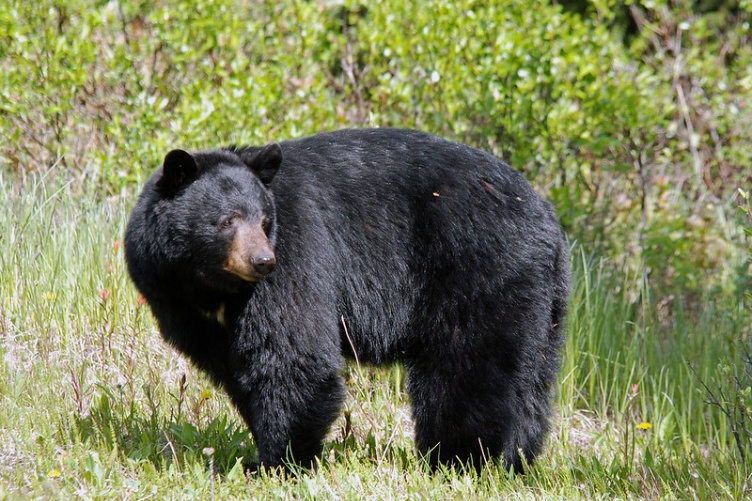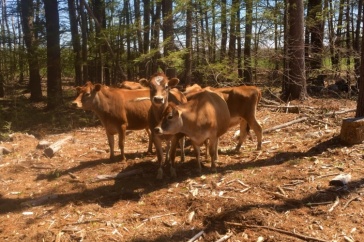
"Black Bear" by matlacha is licensed under CC BY-NC-SA 2.0.
Bears are known for being devoted to and protective of their baby cubs, but new research from UNH shows that they may also play a significant role in shielding gray fox from predators like coyotes, who compete with the fox for food and space. The research is one of the first studies to show how black bears provide a buffer to allow other, smaller carnivores to safely co-exist.
“Even though black bears and coyotes are the two most common carnivores in North America, we’re still learning how they affect the ecosystems around them.”
“Even though black bears and coyotes are the two most common carnivores in North America, we’re still learning how they affect the ecosystems around them,” says Rem Moll, assistant professor of wildlife ecology and lead author of the study. “What’s unique about bears is that they hibernate, so they literally disappear for half a year, which we now know can shift animal habits in the ecosystem.”
In the study, published in the journal Oecologia, researchers took a closer look at the hierarchy of carnivores to see if a major life trait, like hibernation, had a significant effect. In the western part of Nevada, near Lake Tahoe, the researchers tracked and monitored the top species of carnivores which included black bears, which are the largest and most dominant species, followed by coyotes, bobcats, and finally gray fox, which are the smallest (a bit larger than a cat) and most subordinate species. They found that in summer the gray fox stayed close to areas populated by black bears, which appeared to provide a top-down buffering effect helping to protect the gray fox from the coyotes. But in the winter, when bears were hibernating, this pattern reversed and coyotes were three times more likely to move into the now vacant bear territories and the gray fox, no longer secure by the presence of the black bear, moved out. This pattern suggests that the top carnivore — black bears — provided a shield for the gray fox from competition with coyotes. But this “bear shield” was only seasonal, disappearing when the bears hibernated.
“In our field of research, there is something called the 'landscape of fear' — the idea that there is a pecking order and that both predators and prey will change their behavior to avoid getting killed,” says Moll. “For decades this was overlooked, so there aren’t a lot of studies showing the connection between black bears and coyotes — two of the most common carnivores in the U.S. — but this work suggests that fear is important in defining the species roles in the ecosystem.”
The researchers say even though this study was done near Lake Tahoe, where black bears were nearly extinct a few decades ago, they believe these instinctual actions could be a very common dynamic in any area where black bears, gray fox and coyotes co-exist.
Funding for this study was supported by the Nevada Department of Wildlife $3 Predator Fee Program and statewide game management support. Co-authors are Patrick J. Johnson and Carl W. Lackey, Nevada Department of Wildlife; Brian F. Wakeling, Montana Fish, Wildlife, and Parks; Jon P. Beckmann, Wildlife Conservation Society; Joshua J. Millspaugh, University of Montana; and Robert A. Montgomery, Michigan State University.
-
Written By:
Robbin Ray ’82 | UNH Marketing | robbin.ray@unh.edu | 603-862-4864

















































